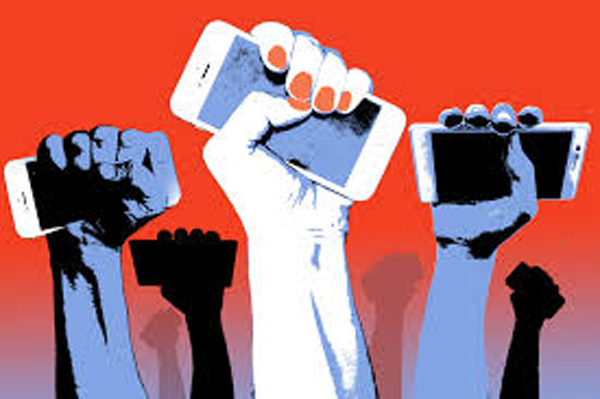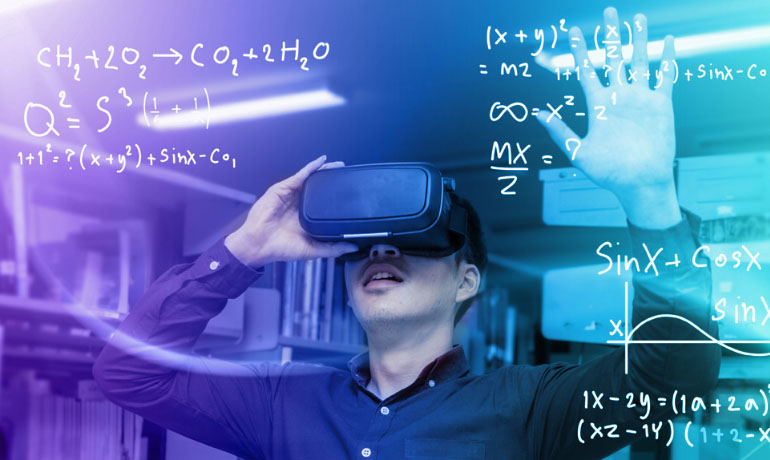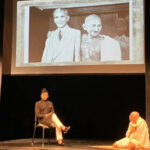A friend mentioned that he suddenly felt like he was in the middle of the 90’s movie “Demolition Man” due to the advent of social distancing. I ignored his quip as I tried to wade through the flood of messages advertising online services and the shift to working remotely from home. And that was just the beginning. Nobody wanted to step out even if they could, as essential supplies could be bought while venturing out in the partial lockdown. Screenings, social distancing, self-isolation, queuing in lines for medicine and groceries, masks, sanitising hands at every line and what not; all for our safety and to contain the spread. In uniformity, Pakistan has followed it all. And the government must be commended for following through at every step of the way to implement structure.
Slowly but surely, we restructured ourselves to work across digital means as workplaces shut down. The Zoom app saw an increase of users in the form of millions within the first few weeks as people took to remote conferences to try and carry on as much business as they possibly could, given the circumstances. Many classes for students and courses went online as e-learning became the norm for what was termed as the temporary shutdown. Suddenly, the internet was flooded as billions reached out for some kind of human connectivity and communication. It was the only outlet for people used to having the freedom to step out of their homes when they could. Now, confined to spaces and living in close proximity to each other day in and day out, the global lockdown on human lives was going to have an effect on many things including the way we lived and worked. But more importantly, one felt that the shift towards digital means was going to remain a more prominent feature of living as global movements were concerned.
A marked move towards digital fields or working remotely is certainly apparent
The first few weeks were interesting as emotions ranged from panic to unease and to a strange calm of acceptance of the crisis. These weeks have brought about the questions of what next: sustainability and sustainable models for means of work in particular for the future was immediately on everybody’s minds as one knew that after COVID 19 was finally contained, the global recession was soon upon us. The world had changed in front of our eyes and we realised that after the pandemic, there were some other variables that would be the reality of our living situations even in the near future. As economists, strategists, politicians and technocrats prepared their analysis of the situation, one thing was exceedingly apparent out of all of this: each person that was connected to the world was working remotely via one medium-the internet. A virtual world that was once a parallel aspect of human life was now the foremost means of connection and part of the fabric of being.
 As articulated by Klaus Schwab, Founder of the World Economic Forum (WEF), as well as the wealth of knowledge given by WEF via their portals, which have stressed on the Fourth Industrial Revolution, technology and accelerator programs as filling the knowledge and economic gap for a sustainable future. How would this even be applied to Pakistan? With an economy based on slightly over 45 per cent of agricultural land, where the essential worker here is the labourer in the fields. With that as well as the population of Pakistan below the poverty level and being wage earners, one wonders the plight of the situation and what would happen next. Lack of electricity, and even water in some areas, are basic hindrances. Where would connectivity even happen in regions such as these?
As articulated by Klaus Schwab, Founder of the World Economic Forum (WEF), as well as the wealth of knowledge given by WEF via their portals, which have stressed on the Fourth Industrial Revolution, technology and accelerator programs as filling the knowledge and economic gap for a sustainable future. How would this even be applied to Pakistan? With an economy based on slightly over 45 per cent of agricultural land, where the essential worker here is the labourer in the fields. With that as well as the population of Pakistan below the poverty level and being wage earners, one wonders the plight of the situation and what would happen next. Lack of electricity, and even water in some areas, are basic hindrances. Where would connectivity even happen in regions such as these?
Here, one must acknowledge, Pakistan has been very active as far as its Digital Pakistan Vision initiative has been concerned. Another addition is the recent growth in an increase in smartphone usage and extensive cellular data network coverage, especially in remote areas. What we will need is a thought-out road map for complete digitalisation as the task at hand is exceedingly ambitious. The complete solution will set sustainability goals in light of the present crisis, which we will be facing as soon as the virus is contained. Our needs to keep abreast of the changing face of the world would still require us to include more accelerator programs, which would focus our efforts on financial mechanisms, public policies, partnerships for collaborative efforts, good governance, access to employment, access to mobility and even factual data. Digitised banking would be a priority where one should realise a great percentage of people remain unaccounted for without National Ids and continue to be unbanked. The “Ehsaas” and “Kifalat” programs have started a painstaking task of not only digitising but also providing a consensus program, which acknowledges its Non-identified citizens (especially women). In recent developments during this time of crisis, the Ehsaas program has emerged as a leader in welfare and relief work distribution. Their Emergency Cash Program has used technology for beneficiary identification, district-level verification, wealth profiling and payment mechanisms with an outreach aimed at providing welfare to 12 million families.
Pakistan has already set up the National Accelerator on Closing the Skills Gap, which has been structured to re-skill men and women towards digital technology as a part of a WEF associated initiative. This shows the seriousness of how the government is in meeting global market demands and keeping up with international standards. Other initiatives such as The Digiskills Training Program and the President’s Initiative for Artificial Intelligence & Computing have been groundbreaking in the history of Pakistan. Stems field education has also been made a priority by introducing efforts such as the STEM Careers Program through the Higher Education Commission and Pakistan Institute of Engineering & Applied Sciences. One must be aware of some facts already that an overall move towards a digital-based working economy with the majority of jobs being working via technology and even remotely, will not be so easy (and cannot happen within months). However, it will soon be a necessity to keep up with the new world of the living that has suddenly emerged into being.
The transformation of lives through digital means has been an undeniable necessity to survive for this time period- and certainly had been the goal focus for the near future. But the real question is now as the world hurtles through the current crisis situation at breakneck speed – what of the immediate future?
The marked move towards digital fields or working remotely is certainly apparent as business models were seen to be adapting to new changes. We must put it into focus as to how far along Pakistan is and what other measures will it have to take care to revolutionise itself completely; keeping in mind the entire population. This pandemic has brought out some stark realities to surface as far as a complete shift in human behaviour. What we do next with living in this “virtual” world created right now maybe the next big jump; a digital reality opening up, which has changed the face of the entire globe.





